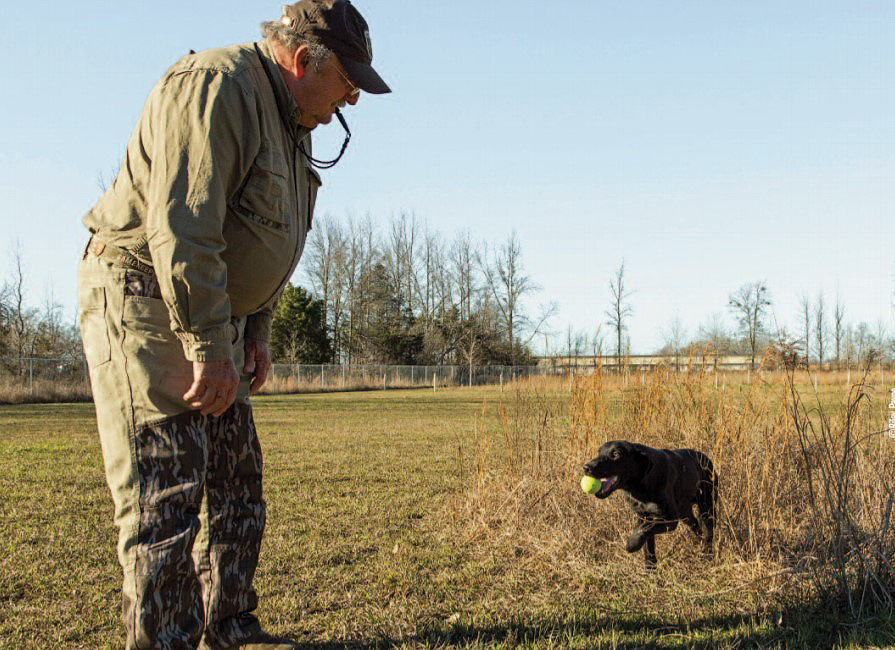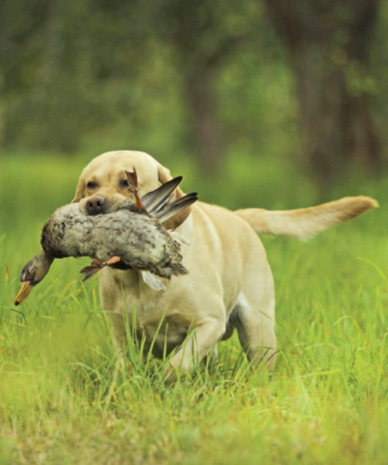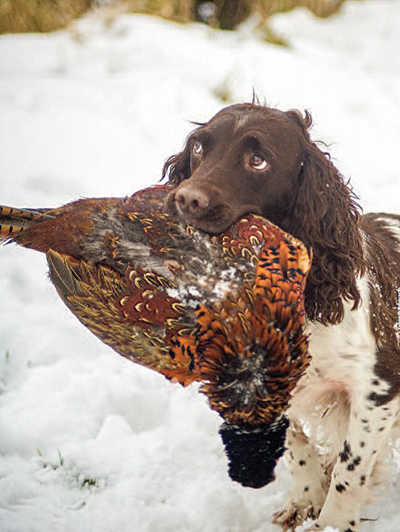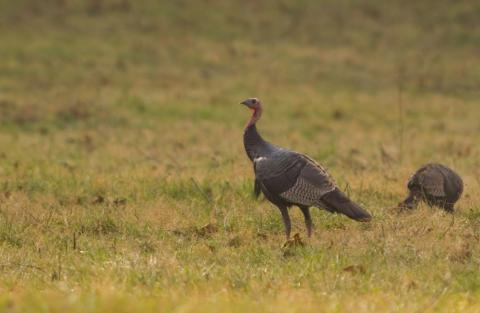Bill Gibson | Originally published in GameKeepers: Farming for Wildlife Magazine. To subscribe, click here.

What is my definition of the “big hunt?” It is the dog going out on a mark, not immediately finding the bird/dummy and then, after a few minutes, leaving the “area of fall” and disturbing game on new ground by running all over the area looking for the dummy or bird. It is certainly not a desirable trait for any hunting dog to possess.
How many times in training, while using dummies or cold game and/or in actual bird hunting situations, has your dog appeared to mark the fall, yet run out, searched the area of fall for a short period, and then put on the “big hunt?” I would bet that this has happened more times than most would care to admit, including me; especially when scenting conditions are poor.
This is where training using the “hunt dead” command and teaching the dog to hold the area of fall are used in conjunction with each other to teach the dog to hunt a confined area rather than putting on the “big hunt“ and potentially disturbing other game in the hunting area.
At some point in the training scheme your dog should have been taught the basic “hunt dead” command and to follow a scent trail using a tennis yellow or orange ball. Before moving onto more advanced hunt dead and scent trail training scenarios some prerequisites are required.

when pursuing upland game or when the dogs are
physically covering ground. However, when duck hunting,
dove hunting and certain other applications, it just saves
so much time if the dog concentrates their efforts where
the odds are greater.
The prerequisites for advanced scent training are that your dog has been trained to sit on the whistle, sit on the flush, walk at heel, return on the here command, stay when told to do so, as well as understanding the back command, and the over commands-both left and right.
In the initial phase of training, yellow tennis balls are a most useful and effective tool to use to teach a young dog to hunt dead on command. To start this exercise, heel the dog out to a predetermined spot, using your whistle blow the command “sit.” Then command “watch” so the dog observes as a tennis ball is tossed a very short distance into low cover. Send your dog and when he/she reaches the “area of fall,” command “hunt dead.” When he/she picks the tennis ball and returns to you, as always, heap lots of praise on the young pup.
After your dog has mastered this skill, go a step further and roll the tennis ball down a sloping hill so that the ball disappears from the dogs view as it rolls into cover. Send your dog on the scent trail of the ball and as he/she reaches the area of fall, immediately command “hunt dead,” the pup will soon learn to follow the scent trail to the ball. Again, when pup picks the ball and returns, assign lots of praise.
After your dog masters this game it’s time to move up to advanced training in heavier cover. However, before moving to heavier cover, transition your dog from a voice command “hunt dead” to a whistle command and a hand signal.
The whistle command and hand motion used to cue your dog to “hunt dead” is four blows on the whistle with a slight delay between each blow and at the same time, turn to face your dog and extend your right arm out and move your hand in and up and down motion while commanding “hunt dead.”
After a few sessions it will no longer be necessary to use the voice command. The dog should quickly learn to hunt back toward you when he/she hears the whistle and sees the up and down hand motion. Note that the whistle command for “hunt dead” differs from the whistle command for “here” in that the “here” command is four rapid blows on the whistle without the pause between the blows.

without seeing a bird/dummy fall. When they go on a blind
retrieve and hear the “hunt dead” command they’ll have
confidence that something is there nearby.
In my previous reference to heavier cover, I am referring to a previously prepared unmowed circle of high grass, left a foot or two high, and approximately twenty (20) feet in diameter. To begin the heavy cover drill, heel your dog on a spot near the circle, command “watch” and as the dog watches, toss a tennis ball into the circle of high grass. After a short delay send your dog and when he/she enters the circle verbally command “hunt dead”. If your dog attempts to leave the circle stop him/her using your whistle and again give the verbal command “hunt dead” as you cast your dog back into the unmowed area with a hand signal or the up and down hand motion. As before, when the dog finds the ball and returns-heap lots of praise. Repeat this scenario until your dog is consistently holding the area of fall and returning with the ball.
In the next phase, as your dog watches toss a tennis ball into the unmowed area, position the dog so it can’t observe, and have an assistant pick the ball up and put it in a pocket or a training bag. Send your dog into the circle and command “hunt dead.” As before, if your dog attempts to leave the circle, stop him/her with a whistle command and give the command “hunt dead” while directing him/her back into the circle with a hand signal and/or the whistle command “here.” Repeat this sequence every time the dog attempts to leave the circle.
After two to four minutes of this, as your dogs attention is directed away from you, drop a tennis ball in the high grass. Stop your dog using your whistle, and command the dog to “hunt dead” while directing him/her toward the area of the circle where the unseen tennis ball was planted.
Continue this drill for several days or until you are satisfied that your dog understands the hunt dead command and consistently hunts within the area of high grass. When you are satisfied with your dog’s progress, send the dog into the high cover without any visual clue and command hunt dead. Hold your dog in the high cover and as before plant the tennis ball and let your dog hunt until he finds and returns with the ball.
At this point it is time to review, and assess what your dog has learned during these training segments. Hopefully:
1. Your dog has been exposed to and has learned to use his/her nose to follow a scent trail.
2. Your dog has been exposed to and understands the “hunt dead” command.
3. Your dog has learned to stay within a confined area and to hunt the “area of fall.”
4. The “stop” and “sit” whistle has been reinforced.
5. The command “here” has been reinforced.
6. The use of hand signals directing the dog back into the area of fall has reinforced your dog’s positive response to hand signals.
7. Your dog has learned and understands that the “up and down motion” of your hand cues him/her to hunt back towards you.
8. Your dog's trust in you as the handler has grown because your dog has found his reward (the tennis ball) when you directed him/her to the area of fall.
With any luck all of these things have been accomplished and your dog is one step closer to becoming a great hunting partner.




























